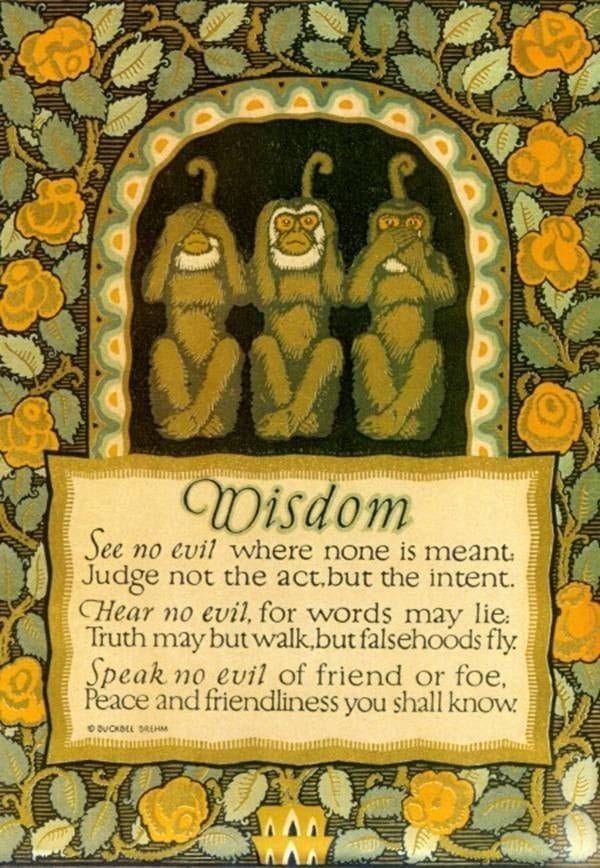Hanuman: The Flying Monkey


Hanuman and the Monkey Army in the Ramayan
In the Ramayana, the monkey army, led by Hanuman, plays a critical role in assisting Lord Ram in his quest to rescue his wife, Sita, from the demon king Ravana. Hanuman is often revered as the embodiment of devotion, strength, and selfless service. His allegiance to Lord Ram is not born of manipulation or coercion but of deep loyalty, love, and a sense of duty to the greater good. In fact, Hanuman’s unwavering support is a symbol of how trust and dedication can elevate both the leader and the follower.
The Flying Monkeys in The Wizard of Oz
In The Wizard of Oz, the Wicked Witch of the West summons the flying monkeys, who act as her enforcers and carry out her bidding, often involving intimidation and force. They serve her out of obligation rather than loyalty or righteousness, motivated by fear and coercion. The Witch uses them to attack Dorothy and her friends, maintaining her control and power over the land. This imagery has transcended its literary roots to symbolize a particular dynamic in human relationships, especially those involving manipulation and control. Here, the flying monkeys are symbolic of manipulation and control—tools of a self-serving figure who lacks genuine loyalty or care for them.
Flying Monkey concept in Psychology
The Flying Monkey concept offers valuable insights into the mechanisms of manipulation and control within interpersonal relationships. By understanding the origins and roles of flying monkeys, individuals can better navigate complex social dynamics, protect their well-being, and foster healthier, more authentic connections. Empowerment through knowledge, setting clear boundaries, and seeking supportive networks are key steps in overcoming the challenges posed by manipulators and their enablers.
Navigating relationships where flying monkeys are involved requires patience, resilience, and a commitment to personal growth. By recognising the signs and implementing effective strategies, you can reclaim your narrative and cultivate a life free from undue manipulation and control.
Manipulation vs. Devotion
While both narratives involve the idea of commanding followers, the essence of their relationships and their moral undertones differ greatly.
1. Intent and Leadership
Wicked Witch of the West: The Wicked Witch uses fear and coercion to control the flying monkeys, who have little agency. They serve her out of obligation, reinforcing a dynamic based on manipulation and self-interest.
Lord Ram: In contrast, Ram leads with righteousness, honor, and a deep sense of justice. His relationship with Hanuman is built on mutual respect, where Hanuman chooses to serve because of his love and admiration for Ram's virtue. Their bond is spiritually uplifting, not manipulative.
2. Service and Purpose
Flying Monkeys: The flying monkeys in The Wizard of Oz have no choice but to carry out the malevolent tasks of the Witch. They are instruments in her selfish agenda, often causing harm or destruction for the sake of her power.
Hanuman’s Service: Hanuman and the monkey army serve with willing hearts and noble purpose. Their mission is to rescue Sita and defeat Ravana, a tyrant who represents adharma (unrighteousness). Hanuman’s service is not about gaining power or personal glory but about restoring justice and helping Ram fulfill his dharma.
3. Symbolism of Loyalty
Flying Monkeys as Pawns: In the Wizard of Oz, flying monkeys symbolize the dangers of blind obedience and the ease with which manipulators can exploit others to maintain control. Their loyalty is superficial, a reflection of the witch’s power rather than true commitment.
Hanuman’s Devotion: Hanuman’s loyalty is a profound reflection of spiritual devotion (bhakti). He serves without expecting anything in return. His love for Ram is unconditional, and his actions are driven by selflessness, making him the epitome of service to a noble cause.
Similarities: Followers and Leadership
Even though the tone and outcome of these stories differ, there are some structural parallels in the way both narratives highlight the power of leaders to inspire—or manipulate—those under their influence:
Influence of a Leader: In both tales, the leader holds considerable power over their followers. The Wicked Witch influences the flying monkeys negatively, bending them to her will. Ram, on the other hand, leads by example, inspiring Hanuman through his virtuous nature.
The Role of Followers: The flying monkeys and Hanuman are tasked with critical missions: the flying monkeys must attack Dorothy and her friends, while Hanuman helps Ram defeat Ravana. In both cases, the followers carry out key functions in the larger storyline, but the motives and the moral grounds upon which they act are vastly different.
Challenges and Resolution: Both sets of followers are pitted against overwhelming odds. The flying monkeys face Dorothy and her companions, who eventually triumph with the power of goodness and magic. Similarly, Hanuman and the monkey army confront the formidable forces of Ravana, but they prevail through bravery, devotion, and the righteousness of their cause.
Two Tales of Leadership and Loyalty
The Wizard of Oz and the Ramayana provide compelling explorations of leadership and loyalty, but they diverge in the ethical landscape of their narratives. In The Wizard of Oz, the flying monkeys represent the darker side of loyalty, where followers are manipulated and coerced into serving malevolent purposes. In contrast, Hanuman and the monkey army represent the ideal of selfless service and loyalty to righteousness, showcasing how true devotion is inspired by virtue, not fear.
Both stories teach us about the influence leaders can wield over others—whether through coercion or inspiration. Where the Wicked Witch uses fear to maintain control, Ram’s compassion and moral clarity draw Hanuman into a bond of divine service, proving that authentic leadership transcends manipulation and fosters true loyalty.
The Flying Monkey in Psychology
What is a Flying Monkey?
In psychological terms, a Flying Monkey refers to an individual who, consciously or unconsciously, assists a manipulative person—often a narcissist—in exerting control or influence over others. These individuals may not fully grasp the manipulator's intentions and can be used to spread misinformation, enforce boundaries, or carry out tasks that maintain the manipulator's power.
The Role of Flying Monkeys in Narcissistic Abuse
Narcissistic abuse is characterized by manipulation, control, and exploitation, often leaving victims feeling isolated and powerless. Flying monkeys play a crucial role in this dynamic by acting as intermediaries or enforcers for the narcissist. They might:
Spread Rumors or Lies: They disseminate false information to tarnish the victim's reputation or isolate them further.
Enforce Boundaries: By aligning with the narcissist, they help maintain the manipulator's control over social or professional circles.
Provide Validation: They reinforce the narcissist's narrative, making it appear more credible to outsiders.
Why Do Flying Monkeys Support Manipulators?
Flying monkeys might be drawn into supporting a manipulator for various reasons:
Loyalty or Friendship: Genuine friendships can be exploited, with the manipulator leveraging trust to gain assistance.
Shared Beliefs: They may share the manipulator's worldview or be convinced by their rhetoric.
Fear or Coercion: In some cases, manipulators might use threats or intimidation to compel others to act on their behalf.
Identifying Flying Monkeys
Recognizing flying monkeys is crucial for those navigating relationships with manipulators. Here are some signs to look out for:
Unquestioning Support: They consistently back the manipulator without considering the broader context or potential harm.
Spreading Negative Information: Engaging in gossip, spreading rumors, or sharing unverified information that aligns with the manipulator's agenda.
Isolation of the Victim: Encouraging others to distance themselves from the victim, either overtly or subtly.
Lack of Empathy: Showing little understanding or concern for the victim's perspective or well-being.
Types of Flying Monkeys
Flying monkeys come in many forms, with varying degrees of awareness and complicity. Some are manipulated without realizing it, while others actively participate for personal gain. Understanding the psychological profiles behind flying monkeys is important when dealing with narcissistic abuse or manipulation. Whether driven by fear, loyalty, or personal gain, these individuals often play a critical role in enabling the narcissist to maintain control and continue their abusive patterns. Recognizing these dynamics is essential for anyone seeking to navigate or escape from a toxic relationship.
1. The Unwitting Flying Monkey
This type of flying monkey is manipulated without fully realizing it. They are often well-meaning and are unaware that they are being used by the narcissist to control or harm the victim. The narcissist might present a sob story or distort the truth, making the unwitting flying monkey believe they are helping someone in need.
Psychology: These individuals tend to be empathetic, trusting, or naïve. They often operate from a place of wanting to be helpful and may not have the critical thinking skills to see through manipulation.
Motivation: Their involvement stems from genuine care or concern, but they lack awareness of the narcissist's true intentions.
Example: A friend or family member who sympathizes with the narcissist's victim narrative and unknowingly spreads misinformation or pressures the victim to comply with the narcissist's demands.
2. The Willful Flying Monkey
This flying monkey knows that the narcissist is using manipulative tactics but either doesn’t care or actively supports the behavior. They may participate in the abuse out of loyalty to the narcissist or for personal gain.
Psychology: These individuals might exhibit traits of co-dependency, people-pleasing, or share narcissistic tendencies themselves. They might have their own unaddressed insecurities and seek validation by siding with the narcissist.
Motivation: They often side with the narcissist out of self-interest, fear, or desire for approval. Some may be afraid of becoming a target themselves, while others may enjoy the sense of power they gain from being on the "winning" side.
Example: A co-worker who knows the boss is toxic but continues to support them to secure a promotion or stay in favor.
3. The Opportunistic Flying Monkey
These flying monkeys are aware of the manipulation but choose to support the narcissist for their own personal gain. They take advantage of the situation to further their own interests.
Psychology: Opportunistic flying monkeys are often self-serving and may have manipulative tendencies themselves. They may not be narcissists but are skilled in navigating social dynamics for personal benefit.
Motivation: They act in alignment with the narcissist because it brings them some reward—whether it be social standing, financial gain, or emotional satisfaction.
Example: A family member who sides with the narcissist during a family conflict to gain a favorable position in a will or inheritance.
4. The Fearful Flying Monkey
This type of flying monkey is involved out of fear. They might be coerced or intimidated by the narcissist and comply to avoid becoming a target themselves. They do not necessarily agree with the narcissist's actions but feel powerless to resist.
Psychology: These individuals often have low self-esteem or people-pleasing tendencies. They are motivated by anxiety, fear of conflict, or fear of rejection.
Motivation: They are motivated by the desire to avoid punishment or exclusion. They fear standing up to the narcissist because of the potential consequences.
Example: A co-worker or family member who goes along with the narcissist’s abuse because they fear retaliation or becoming the next victim of emotional manipulation or aggression.
5. The Co-Narcissist or Enabler
This is a flying monkey who not only supports the narcissist but may also share narcissistic traits themselves. They enable the narcissist’s abusive behavior by reinforcing the narrative, adding fuel to the manipulation, and assisting in the abuse willingly and enthusiastically.
Psychology: These individuals might have narcissistic tendencies, such as a need for control, admiration, or superiority. They enjoy being part of the narcissist’s schemes because it gives them a sense of power or validation.
Motivation: Their involvement stems from a desire for control or a shared worldview. They may enjoy seeing others suffer or believe that aligning with the narcissist elevates their status.
Example: A colleague who takes joy in spreading gossip or undermining others at the narcissist’s behest because it gives them a sense of superiority.
6. The Empath Flying Monkey
Sometimes, an empath or highly sensitive person can be turned into a flying monkey due to their extreme compassion and inability to see through the narcissist’s facade. Narcissists often manipulate empaths by playing the victim card or exaggerating their struggles.
Psychology: Empaths are naturally attuned to the emotions of others, and narcissists can exploit this by presenting themselves as vulnerable or misunderstood. The empath wants to help, and in doing so, they become a tool in the narcissist’s manipulation.
Motivation: Their involvement is rooted in their overwhelming desire to help. They believe that by supporting the narcissist, they are doing the right thing, but they are being exploited for their compassion.
Example: A caring friend who consoles the narcissist and tries to mediate conflicts, unknowingly aiding in the narcissist’s smear campaign against someone else.
7. The Flying Monkey with Stockholm Syndrome
This type of flying monkey develops a form of emotional attachment or loyalty to the narcissist, even though they are also being manipulated or abused. This phenomenon is similar to Stockholm syndrome, where victims begin to identify with and defend their abuser.
Psychology: These individuals have been under the narcissist's control for so long that they internalize the abuse and rationalize it. They may defend the narcissist and attack others in order to avoid cognitive dissonance about their own victimization.
Motivation: Their involvement stems from a distorted sense of loyalty or survival mechanism. They believe that siding with the narcissist protects them from harm, and they may even view the narcissist as benevolent.
Example: A long-term partner or family member who defends the narcissist’s abusive behavior and blames others, including themselves, for provoking the abuse.
Strategies to Handle Flying Monkeys
Dealing with flying monkeys requires a thoughtful and strategic approach to minimize their impact and maintain one's well-being.
1. Establish Boundaries
Clearly define what behavior is acceptable and what isn't. Communicate these boundaries firmly but respectfully, and be consistent in enforcing them.
2. Limit Interaction
Reduce contact with individuals who consistently act as flying monkeys. This might involve setting up physical or emotional distance to prevent them from influencing your environment.
3. Seek Support
Connect with trusted friends, family members, or mental health professionals who can provide objective perspectives and support. Building a strong support network can counteract the negative influence of flying monkeys.
4. Maintain Documentation
Keep records of interactions, especially if the situation involves defamation or harassment. Documentation can be crucial if legal action becomes necessary.
5. Stay Grounded
Focus on your own reality and experiences. Manipulators and their flying monkeys often attempt to distort the truth, so maintaining self-awareness is essential.
6. Educate Yourself
Understanding the dynamics of manipulation and the role of flying monkeys can empower you to navigate these relationships more effectively. Knowledge is a powerful tool in maintaining your autonomy.
Moving Forward: Empowerment and Resilience
Encountering flying monkeys can be disheartening and challenging, especially when they disrupt personal and professional relationships. However, recognizing their role and implementing strategies to address their influence can significantly enhance your resilience and ability to maintain healthy boundaries.
Embrace Self-Care
Prioritize activities and practices that promote your mental and emotional well-being. Whether it's through meditation, exercise, hobbies, or therapy, taking care of yourself fortifies you against manipulation.
Foster Healthy Relationships
Surround yourself with individuals who respect your boundaries, value your perspective, and support your well-being. Positive relationships can counterbalance the negative influence of manipulators and their flying monkeys.
Cultivate Assertiveness
Developing assertiveness skills allows you to communicate your needs and boundaries effectively. Being able to assert yourself confidently can deter manipulators and reduce the reliance of flying monkeys in exerting control over you.
Conclusion
The Flying Monkey concept offers valuable insights into the mechanisms of manipulation and control within interpersonal relationships. By understanding the origins and roles of flying monkeys, individuals can better navigate complex social dynamics, protect their well-being, and foster healthier, more authentic connections. Empowerment through knowledge, setting clear boundaries, and seeking supportive networks are key steps in overcoming the challenges posed by manipulators and their enablers.
Navigating relationships where flying monkeys are involved requires patience, resilience, and a commitment to personal growth. By recognising the signs and implementing effective strategies, you can reclaim your narrative and cultivate a life free from undue manipulation and control.
Be wise while choosing between the narratives of manipulation and devotion of a flying monkey!
Devotion is a form of surrender, at its heart, it is an act of profound trust and faith. It asks us to give up the illusion of control, not out of defeat but out of recognition that there is something far greater guiding us—whether that be a divine presence, the flow of life, or the inherent wisdom of the universe.
By surrendering, we find peace, release fear, and open ourselves to deeper levels of love, understanding, and connection with the world around us. It is an act of ultimate empowerment, allowing us to embrace life in its fullness, with humility and grace.
सत्यमेव जयते!
In the rich tapestry of literature and psychology, certain terms stand out for their evocative imagery and profound implications. One such term is the "Flying Monkey." Originating from L. Frank Baum's classic tale, The Wizard of Oz, flying monkeys were literal winged creatures that served the Wicked Witch. The concept of "Flying Monkeys" from The Wizard of Oz can draw fascinating parallels with the Ramayana, particularly in the relationship between Lord Ram and Hanuman, the mighty vanara (monkey). Though the contexts differ — one rooted in narcissistic manipulation and the other in devotion and righteousness — the notion of powerful beings commanding or influencing loyal followers can be connected in intriguing ways.
However, in the realm of psychology, particularly in discussions about narcissistic abuse, the term has taken on a metaphorical meaning, describing individuals who unwittingly assist manipulators in their schemes.
This blog delves into the Flying Monkey concept, exploring its origins, psychological implications, and strategies to navigate interactions with such individuals.




